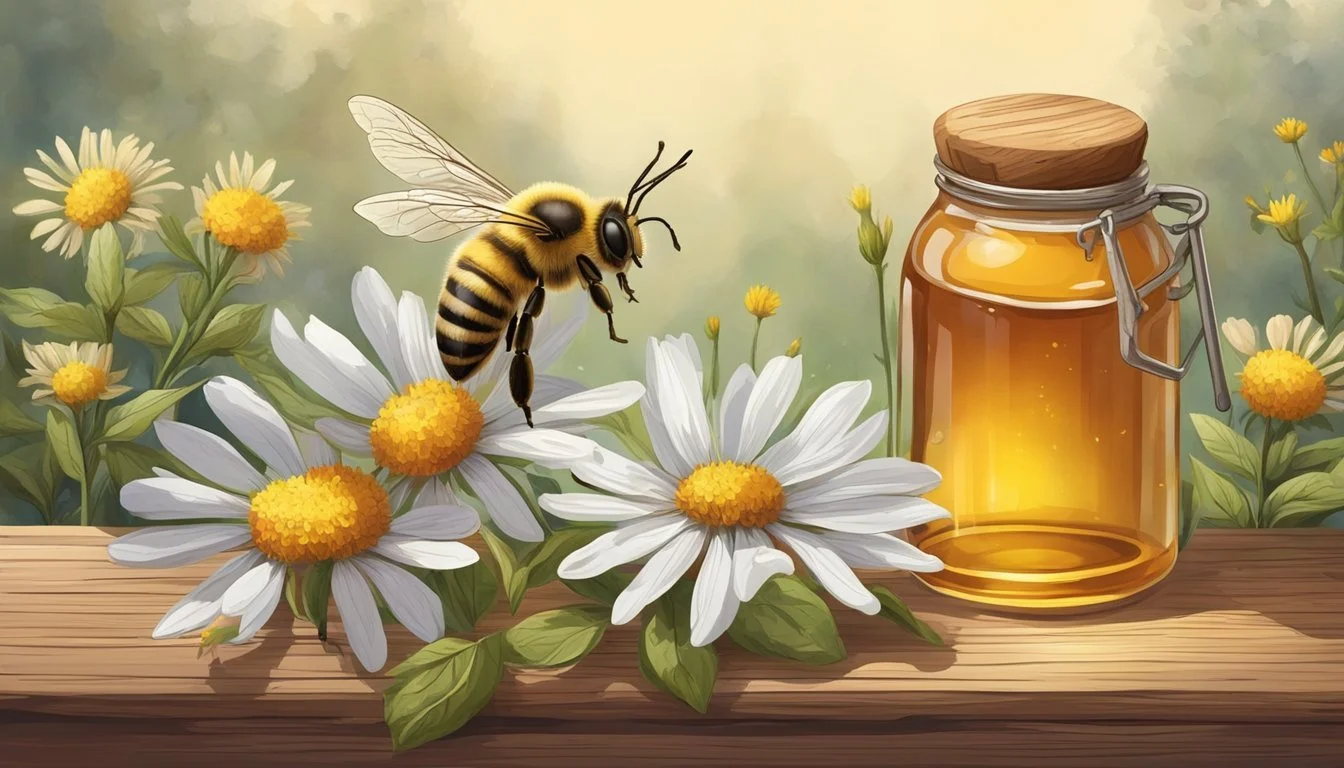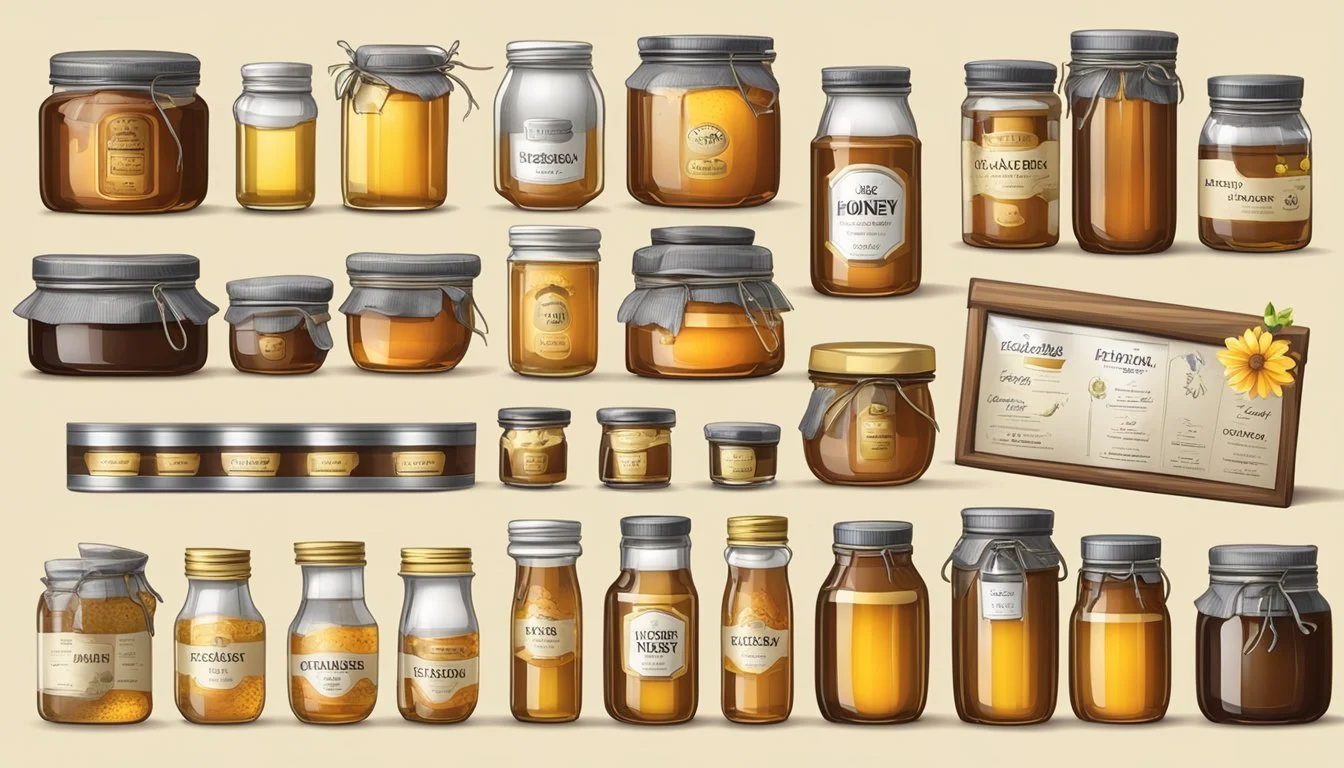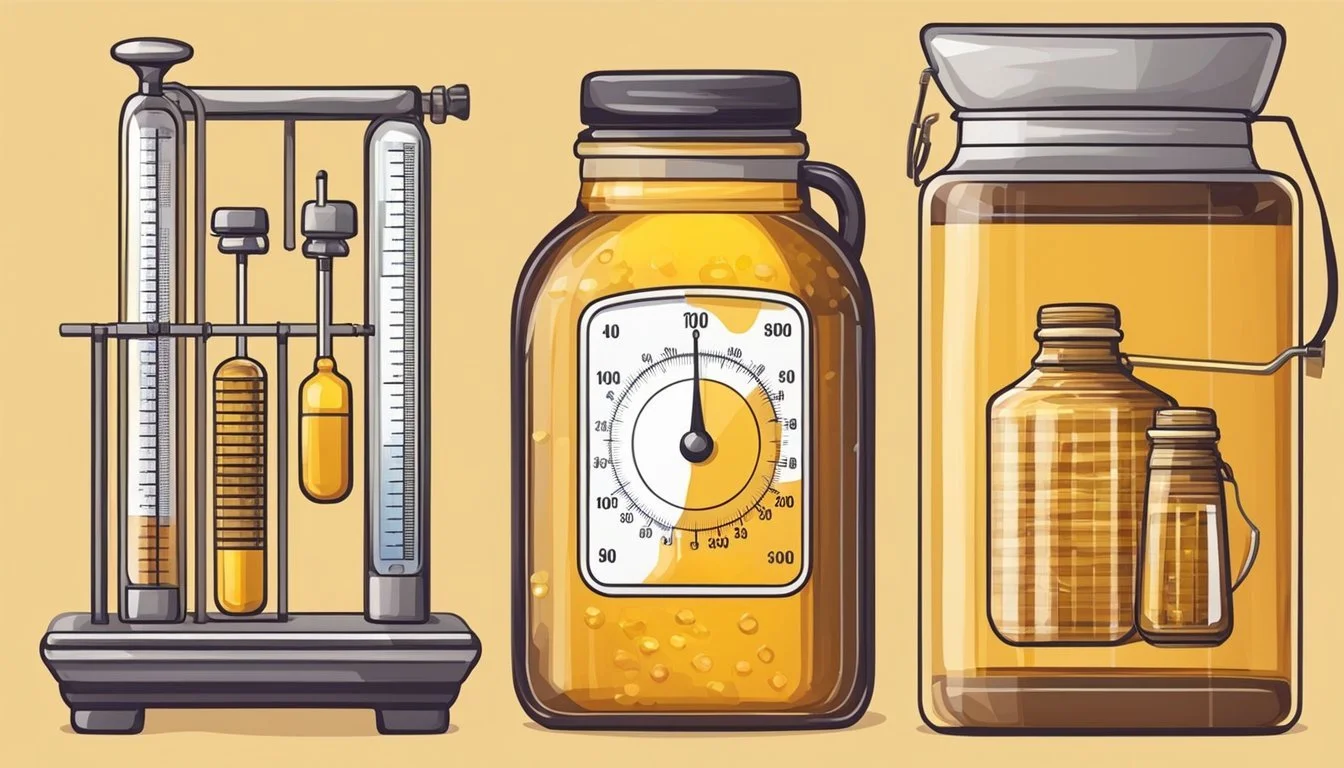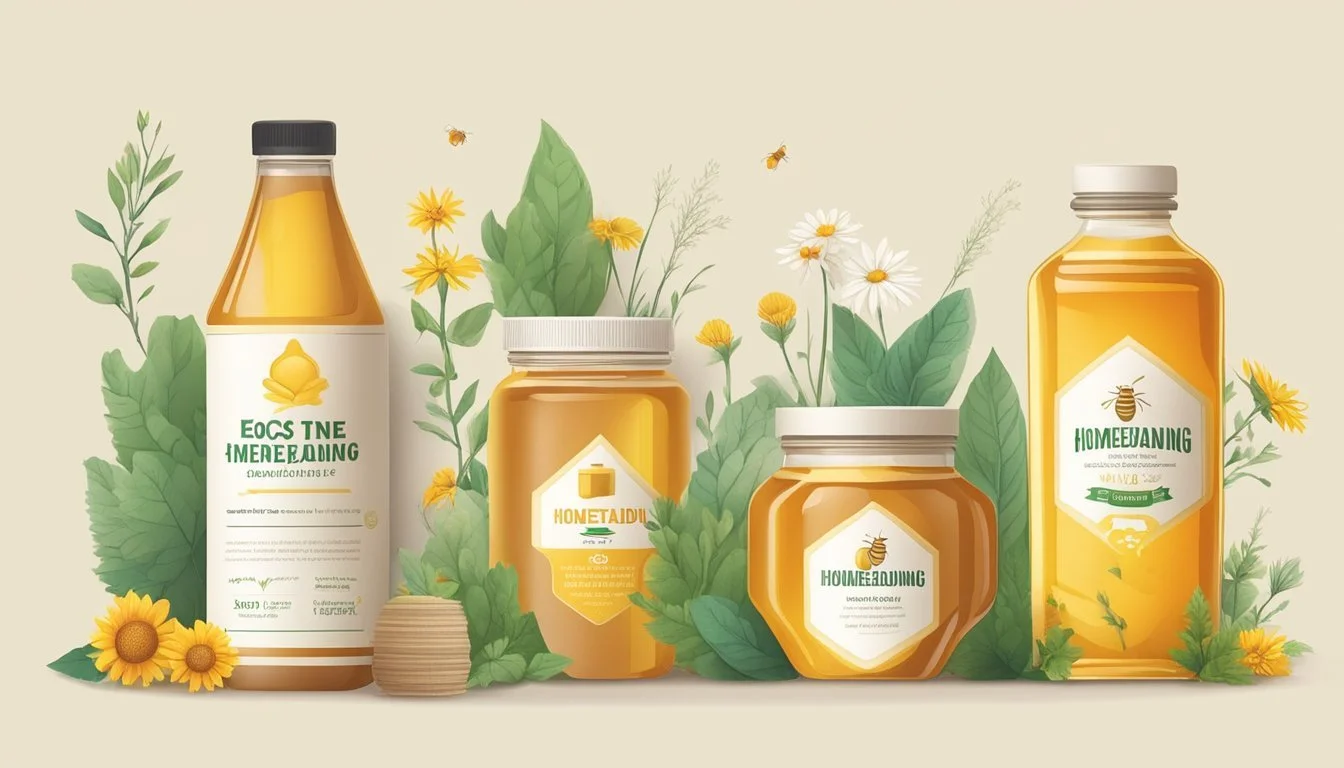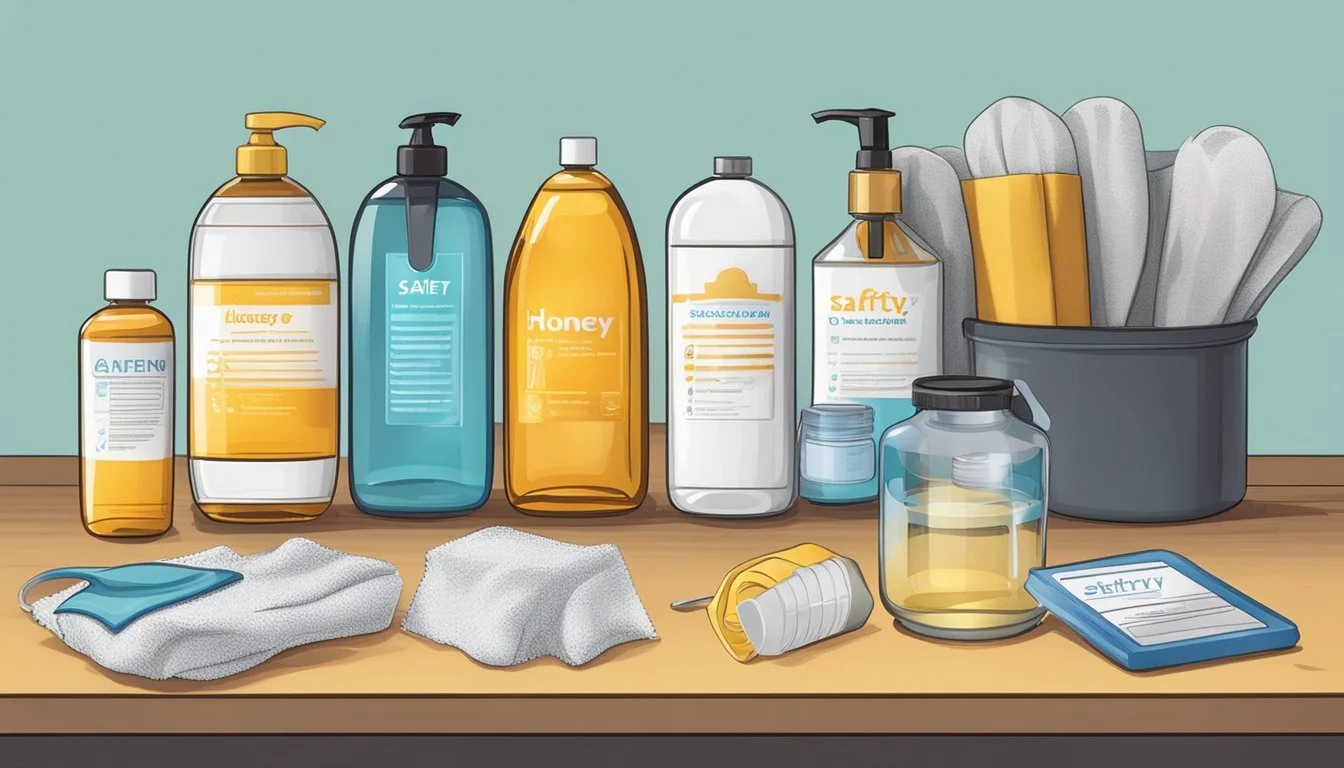The Ultimate Guide to Honey Bottle Packaging for Homesteading
Essentials for Success
Homestead beekeepers recognize that honey bottle packaging is more than just a means to store their precious product; it's an important part of the marketing and quality preservation process. The choice of containers can significantly impact honey's shelf life, appeal, and ease of use. Glass jars have traditionally been the go-to for their non-reactive nature, showcasing the honey's purity and color. However, modern homesteaders may also consider alternative packaging solutions such as BPA-free plastic bottles or innovative pouches, each offering unique benefits like reduced weight and increased durability during transportation.
The packaging journey begins long before the honey is jarred. Beekeepers must ensure their honey is carefully extracted, filtered, and stored in a manner that maintains its natural qualities. Proper filtration is crucial to remove any debris while preserving beneficial enzymes and pollen. After extraction, a slow and steady bottling technique helps prevent the formation of air bubbles which can degrade the honey's appearance and quality.
Labeling is the final, critical step in the honey bottle packaging process. Labels serve a dual purpose: complying with local regulations and informing consumers. They should clearly state the honey's origin, weight, and sometimes the floral source, ensuring transparency and building trust. Homestead beekeepers benefit from understanding the nuances of packaging and labeling, as these elements can transform their hard work into a shelf-ready product that truly represents the fruits of their labor.
Understand the Basics of Honey and Its Harvesting
Preparing for honey harvesting and understanding its nature is pivotal in ensuring the quality and purity of the final product that makes its way into bottles for consumer use.
The Nature of Honey
Honey is a viscous, sweet substance produced by bees primarily from the sugary secretions of plants or from secretions of other insects. Beekeeping practices are crucial for maintaining healthy bee colonies that can yield copious amounts of honey. The composition of honey can differ based on the floral sources available to bees, affecting its flavor, color, and aroma.
Harvesting Techniques
Harvesting honey is a delicate process that requires careful timing and best practices to ensure the bees are least disturbed and the honey is collected at its peak quality. Key steps in harvesting include:
Inspecting hives to determine if honeycombs are ready for extraction.
Removing frames and gently brushing bees away from the combs.
Utilizing an uncapping tool to expose the honey.
Spinning the frames in a centrifugal extractor to remove honey.
Adopting food safe practices throughout the harvesting process.
Quality and Purity of Honey
For the quality and purity of honey, it is essential to follow a meticulous process once the honey is extracted.
Filtering honey to remove beeswax and other impurities is a common practice.
Ensuring honey is properly filtered and free from contaminants before bottling.
Honey storage conditions should be controlled to preserve its natural properties and prevent fermentation or crystallization.
Quality control throughout all stages, from harvesting to packaging, guarantees that consumers receive the best product.
Choosing the Right Materials for Honey Bottles
When homesteaders consider packaging options for honey, they must weigh the pros and cons of different materials. The choice between glass and plastic containers and the evaluation of container safety are crucial to maintaining the quality of honey.
Glass vs. Plastic Containers
Glass Jars:
Advantages: Glass is inert, meaning it doesn't interact with the honey, thus preserving the taste and quality. Glass can also be easily sterilized and is 100% recyclable.
Disadvantages: Glass jars are heavier and more fragile, which may increase shipping costs and risk of breakage.
Plastic Bottles:
Advantages: Lightweight, less expensive, and shatter-resistant. Plastic bottles can be convenient for squeeze designs, enhancing customer usage experience.
Disadvantages: Some plastics can leach chemicals if they are not food-grade or BPA-free. They may not be as effective as glass in preventing honey from absorbing odors or moisture from the environment.
Glass: Advantages - Does not interact with honey, recyclable, can be sterilized, Disadvantages - Heavier, fragile, may be more costly
Plastic: Advantages - Lightweight, shatter-resistant, cost-effective, Disadvantages - Potential for chemical leach, less protective against odor/moisture
Evaluating Container Safety
Homesteaders must ensure that the containers used are food-safe to prevent contamination:
Glass Jars: Typically considered the safest option as they do not contain BPA and have a non-porous surface preventing bacteria growth.
Plastic Containers: Must be food-grade and preferably BPA-free to ensure no harmful chemicals leach into the honey. Food-grade plastic buckets are also a viable option for larger quantities.
Food-Safe Certification:
Look for markings or certifications that the material is food-safe. This indicates that the container has been tested and approved for direct contact with food products.
Consider Environmental Factors:
Evaluate the resistance of the container to environmental factors such as light, moisture, and oxygen. These factors can degrade the honey's quality over time.
Choosing the correct container material is essential for the preservation of honey's natural characteristics and safety for consumption. Whether glass or plastic, the container must align with the homesteader's practical needs and ensure the honey remains in its purest form.
Packaging Design and Branding Strategies
The success of honey products in the competitive market hinges on effective packaging design and branding strategies, which not only attract customers but also communicate the brand's values and story.
Creative Label Design
The label serves as the primary interface between the product and the consumer, often making it the deciding factor for purchase. A well-designed label by a proficient graphic designer should include the following elements:
Brand Name: Prominently displayed, it should be easily readable and memorable.
Product Information: It must clearly state the type of honey, weight, and nutritional or certification details.
Visual Elements: Utilization of colors, fonts, and imagery that represent the brand's ethos and appeal to the target demographic.
Contact Information: Including customer service details encourages consumer trust and accessibility.
For homesteaders, labels could incorporate elements drawn from their personal story or the local environment to establish a unique brand identity.
Effective Marketing and Branding
A strategic marketing and branding approach is crucial for increasing product visibility and driving sales. The approach should consist of:
Brand Storytelling: Packaging can incorporate design elements that reflect the brand’s history and values, connecting consumers to the brand's unique narrative.
Customer Engagement: Through the use of QR codes or social media links on the packaging, brands can foster a community around their product and enhance customer engagement.
Market Research: Understanding the target audience allows a brand to tailor its packaging design to customer preferences, potentially boosting sales.
Quality Perception: High-quality materials in packaging design can enhance the perception of the product and justify a premium price point.
In conclusion, a brand should aim to create a resonant and authentic packaging design that not only safeguards the honey but also maximizes its marketability through compelling branding strategies.
The Bottling Process Explained
Beekeepers understand that the transition from hive to bottle involves meticulous attention to detail, ensuring each drop of honey preserves its natural quality. The tools used, the sanitization of containers, and the precision in filling and sealing are all pivotal to maintaining the honey's integrity.
Equipment and Tools
Key equipment for bottling honey includes a honey extractor, which spins the frames to release honey, and a honey gate for controlling honey flow during bottling. Honey packaging machines can streamline the process for larger operations. Required tools for a homestead-scale operation typically include:
Honey extractor: manual or electric
Uncapping tools: knife or fork
Buckets with honey gates
Strainers or filters
Jars, bottles, or other containers
Sanitizing and Preparing Containers
Ensuring containers are sanitized is critical to prevent contamination. Containers should undergo thorough cleaning with hot soapy water, rinsed well, and allowed to air dry completely. They may also be sanitized with a solution and then rinsed to make certain no residues would affect the honey's flavor or quality.
Filling and Sealing Techniques
Accurate filling of honey requires patience and a steady hand. The use of a honey gate helps control flow into containers, minimizing air bubbles and spillage. Sealing is the final step to secure the honey’s flavor and freshness. Homesteaders typically hand-tighten lids or employ a heat-sealing method if using security seals for retail.
Open honey gate and fill pre-sanitized containers
Fill to the correct level, leaving appropriate headspace
Wipe rims and apply lids securely
For tamper-proof sealing, appropriate techniques vary by container type
By employing the right equipment and focusing on clean, efficient bottling and sealing methods, beekeepers ensure that the essence of the hive reaches the consumer in its most pristine form.
Regulating Honey Weight, Volume, and Temperature
When packaging honey, it's essential to consider how weight, volume, and temperature affect its density and net weight. Homesteaders must accurately measure these factors to ensure product consistency and customer satisfaction.
Understanding Honey Density and Volume
Honey's density can vary with temperature, which influences its volume. Since honey is sold by weight, which is the net weight listed on the packaging, understanding how temperature affects honey's density is crucial. Here is a simplified view:
At higher temperatures, honey becomes less dense and may occupy more volume.
At lower temperatures, honey becomes more dense and occupies less volume.
Thus, when bottling honey, one should adhere to these guidelines:
Always measure honey by weight (net weight in ounces), not volume, to provide consistent quantities.
Use scales calibrated in ounces to ensure precision.
Controlling Temperature During Bottling
Temperature control during the bottling process is important to maintain honey's flavor and viscosity. Here's how to manage temperature:
Storage: Honey should be kept in a cool, dark place with temperatures consistently below 50°F.
Bottling: Avoid high temperatures; excessive heat can degrade honey's natural flavors and properties.
Freezing: While honey can be stored under 32°F, ensure containers are freezer safe to prevent damage.
By closely monitoring and regulating temperature, homesteaders can ensure that honey is bottled at a consistent density, preserving its quality and true weight.
Storage and Handling of Packaged Honey
Proper storage and handling are crucial for maintaining the quality of honey in jars and bottles. Indeed, these measures directly affect honey flow, the presence of air bubbles, foam formation, and the preservation of taste and moisture content.
Protecting from Light and Air
Light Exposure:
Glass Jars: Store them in a cool, dark place away from direct sunlight to prevent degradation of flavor and color.
Sealing:
Honey Jar Lids: Ensure lids are screwed on tightly to minimize air exposure, which can lead to fermentation and loss of aroma.
Ensuring Long-Term Honey Quality
Moisture Content:
Storage Temperature: Keep honey stored at temperatures below 50°F to reduce the risk of crystallization and maintain consistency.
Honey Flow and Foam:
Settling Time: Allow honey to settle after bottling to let air bubbles rise and foam dissipate, ensuring a clear product.
Advanced Packaging Techniques and Innovations
In the realm of honey bottle packaging, embracing advanced techniques and innovations can significantly enhance both product integrity and customer appeal. The following subsections examine the streamlined approach to bulk honey packaging and the uniqueness of specialty honey containers.
Bulk Honey Packaging
For producers who need to package large quantities of honey, bulk packaging is a critical consideration. They often utilize sturdy, food-grade containers that ensure the safety and quality of honey during storage and transport.
Material Choices: Stainless steel and food-grade plastic are common for bulk containers due to their durability and ease of cleaning.
Innovative Features: Some bulk containers come equipped with honey gates or valves, facilitating easier decanting without compromising the honey's purity or risking contamination.
Specialty Honey Containers
Packaging honey in specialty containers can differentiate a product on crowded shelves. These containers can be both functional and eye-catching, often used to target niche markets or create a premium look.
Muth Jars: A vintage-style option that harks back to the era of Charles Muth, these glass jars tend to captivate consumers with their nostalgic design.
Container Material: Glass remains a popular choice for specialty containers. However, advancements in BPA-free plastics now provide an equally attractive and sometimes more durable alternative.
By thoughtfully choosing the right packaging techniques, beekeepers and honey producers can offer products that are both aesthetically pleasing and maintain the highest quality standards.
Confronting Challenges in Honey Packaging
In homesteading, the packaging process for honey entails protecting the product's integrity while adhering to food safety regulations. Specific challenges like pests, contaminants, and conformity to legal standards are forefront concerns for producers.
Pests and Contaminants
The threat of pests such as wax moths and contamination from wax debris is pervasive in honey packaging. To ensure cleanliness and maintain the natural quality of honey, one must use containers that are impenetrable to pests and do not incorporate unwanted odors or flavors into the honey. Regular monitoring and maintenance of packaging facilities will significantly reduce the risk of infestation and preserve the product's purity.
Pests/Contaminants: Wax Moths, Prevention Measures: Use of airtight and pest-proof containers
Pests/Contaminants: Wax Debris, Prevention Measures: Filtration systems prior to packaging
Pests/Contaminants: Odors/Flavors, Prevention Measures: Storage in non-reactive, food-safe materials
Regulatory Compliance and Food Safety
Producers must navigate complex regulatory compliance to ensure food safety. This involves packaging honey in food-safe materials and following guidelines that govern labeling and handling. Containers must be sterilized and designed to shield the honey from external disease-causing agents. Detailed records and regular inspections help homesteaders remain compliant with food safety regulations.
Food Safety Aspect: Material Safety, Compliance Strategy: Use of certified food-safe packaging materials
Food Safety Aspect: Labeling, Compliance Strategy: Adherence to local and federal labeling laws
Food Safety Aspect: Handling, Compliance Strategy: Implementation of hygienic packaging processes
By addressing these challenges with diligence, homesteaders can ensure their honey remains pure, safe, and in high regard among consumers.
Practical Tips for Beekeepers and Producers
For beekeepers and producers, ensuring the quality of honey from hive to home involves adhering to best practices in honey packaging. This section provides specific guidance on the utilization of National Honey Board resources and industry packaging best practices.
Utilizing the National Honey Board Resources
The National Honey Board offers a wealth of information tailored to the needs of beekeepers and honey producers. Beekeepers can access detailed materials on marketing, industry research, and technical tools designed to support honey production and sales. It is crucial for beekeepers to remain informed on current standards and trends through the board's guidelines. They should specifically leverage insights on pollinators' health and honey's nutritional benefits to educate consumers and enhance packaging appeal.
Honey Packaging Best Practices
Honey producers must prioritize certain practices to maintain product integrity during packaging:
Container Selection: Choose materials that showcase honey while protecting its natural properties. Glass is preferred for purity and recyclability, though plastic is useful for its durability and lightweight.
Labeling: Comply with legal requirements by including net weight, origin, and contact information. Symbols or phrases indicating the honey is raw or locally-sourced add market value.
Closure Types: Use airtight lids to prevent contamination; options include screw-on lids, flip-top, or spout closures based on the desired user convenience.
Filtration: Implement a straining process to eliminate debris while preserving beneficial enzymes. A double layer of cheesecloth or a nylon straining bag can achieve the desired clarity.
Settling Time: Allow honey to settle after extraction, giving time for air bubbles to surface—typically 24 to 48 hours—before bottling.
Packaging Design: Opt for clear labeling that communicates the honey’s unique qualities and ensures it stands out on shelves.
By following these practices, beekeepers and honey producers support the vitality of the beekeeping industry and guarantee consumers receive high-quality products.
Customer Convenience and Experience
When homesteaders approach honey bottle packaging, they prioritize both design elements that enhance user convenience and comprehensive customer support to ensure a satisfying experience.
Package Design for Usability
Glass Bottles: Consumers typically associate glass bottles with quality. When choosing glass, it's essential to consider the shape and the lid type for ease of use. For instance, bottles with flip-top or spout lids can facilitate easier pouring, reducing the mess and waste.
Spoon Integration: Some packages incorporate a spoon, which is a convenient tool for users who prefer to measure their honey consumption. Package designs should include this feature in a way that maintains the product's purity and freshness while ensuring the spoon's easy retrieval and storage.
Customer Service and Support
Inquiries & Issues: Dealing with customer concerns swiftly and effectively is crucial. Providing clear instructions with the packaging regarding honey storage or the best way to extract honey from the bottle ensures consumers can enjoy the product with minimal issues.
Replacements & Refunds: A straightforward policy for replacements or refunds builds trust. If a consumer receives a damaged container, for example, they should be able to easily contact customer service for a hassle-free resolution.
By focusing on packaging that ranks high on usability and combining that with strong customer service protocols, homesteaders set themselves apart in the market, providing value that consumers appreciate and remember.
Additional Honey Products and Derivatives
In addition to honey, beekeeping also yields valuable products like royal jelly and beeswax, both of which have distinct packing and marketing strategies.
Packing and Marketing Royal Jelly
Royal jelly, a secretion used to feed queen bees and larvae, is high in nutrients and often sold as a dietary supplement. When packing royal jelly for sale, one should opt for darkened glass containers to protect it from light, which can degrade its quality. For marketing, highlighting its health benefits, such as enhancing immunity and skin health, can attract consumers looking for natural supplements.
Packaging materials: Darkened glass vials or jars
Labeling requirements: Nutritional information, health benefit claims (FDA regulated)
Beeswax and Related Products
Beeswax is another byproduct and is prized for its versatility. Used in candles, cosmetics, and food, beeswax needs packaging that maintains its purity. Food-grade wraps or sealed containers are standard, with labeling clearly stating whether the beeswax is cosmetic or food grade.
Beeswax products: Candles, lip balms, lotions
Packaging tips:
Candles: Moulded shapes, wrapped in cellophane or packaged in boxes
Lip balms and lotions: Small tins or plastic tubes with tight-sealing lids
For both products, ensuring that the packaging meets industry standards and communicates the product's use is key for consumer trust and satisfaction.
Maintaining Hygiene and Safety Standards
When packaging honey, maintaining the highest standards of hygiene and safety is crucial for both the quality of the product and consumer health. Beekeepers must be especially vigilant as they transition from the harvesting to the packaging phase.
Harvesting:
Harvest honey only under favorable weather conditions, avoiding rain or high humidity to prevent contamination.
Capped honey, the bee's natural way of deeming honey ready for harvest, should be the primary target, as it has lower moisture content and is less susceptible to spoilage.
Upon extraction, honey should be immediately transferred through a honey sieve to remove impurities.
Sanitizing:
Containers and tools must be thoroughly sanitized. One may use a solution of bleach and water (1 tablespoon bleach per gallon of water) followed by a rinse with boiling water.
Use only food safe sanitizers and materials.
Packaging:
Ensure that the environment for bottling honey is clean and free of insects and dust.
All packaging materials must be pre-sanitized and dried to keep the honey free from moisture which can lead to fermentation.
Cleanliness:
Workers should wear protective clothing and use sterilized equipment to handle honey.
Uncapped honeycomb should be handled with care; if it is not ready to be packaged, store it in a clean, dry place to prevent spoilage or crystallization.
By adhering to these hygiene and safety protocols, beekeepers can ensure that their honey remains pure, safe, and of the highest quality from hive to bottle.


